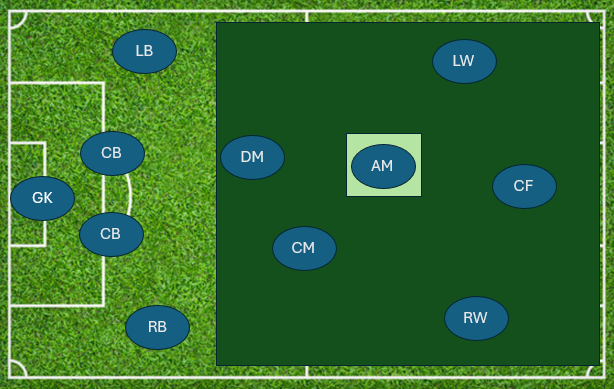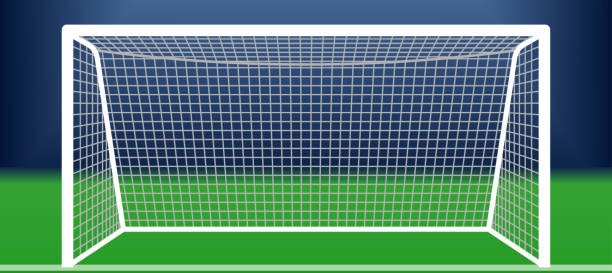ATTACKING MIDFIELDER.

The attacking midfielder (often abbreviated as AM) is a key playmaking position in football, positioned between the central midfielders and forwards. Their primary role is to create goal-scoring opportunities, support the attack, and link up play. Here’s a detailed breakdown of the attacking midfielder’s responsibilities and attributes:
Positioning:
- ▫ CENTRAL OR SLIGHTLY ADVANCED: The attacking midfielder typically operates centrally, just behind the strikers, but can also drift wide to exploit spaces on the flanks.
- ▫ FLEXIBLE ROLE: Depending on the formation, they may play in front of one or two central midfielders, often termed as a “number 10” when in a 4-2-3-1 formation.
Primary Role: Creating Chances:
- ▫ PLAYMAKER: The attacking midfielder acts as the team's chief playmaker, responsible for dictating the tempo and creating goal-scoring opportunities through accurate passing and vision.
- ▫ KEY PASSES: They make decisive, creative passes to forwards and wingers, often threading the ball through defenses to set up shots on goal.
- ▫ SUPPORTING THE ATTACK: In addition to creating chances, they often make runs into the box to finish crosses or rebounds, contributing to the goal tally.
Offensive Responsibilities:
- ▫ VISION AND CREATIVITY: A poacher stays close to the goal and specializes in scoring from inside the penalty area. They focus on positioning and instinctive finishing rather than creating chances.
- ▫ LONG AND SHORT PASSING: They excel in both long passes (to switch play) and short, incisive passes (to break down defenses).
- ▫ DRIBBLING: They often use dribbling skills to maneuver around opponents and create space for themselves or teammates.
- ▫ SHOOTING: Many attacking midfielders are also goal-scoring threats, capable of taking shots from distance or finishing chances within the box.
Defensive Responsibilities:
- ▫ PRESSING: While primarily focused on attacking, they also contribute defensively by pressing opponents and recovering possession when the team loses the ball.
- ▫ TRACKING BACK: Depending on the team’s defensive shape, attacking midfielders may need to track back to help in defense, especially during counterattacks.
Tactical Variations:
- ▫ FORMATION INFLUENCE: The role can vary significantly based on the team’s formation
- ▫ IN A 4-2-3-1: the attacking midfielder plays centrally, focusing on linking midfield and attack.
- ▫ IN A 4-4-2: they may play as a second striker or as a traditional midfielder, adjusting their role based on team needs.
- ▫ FLUID ROLES: In some systems, the attacking midfielder may interchange with wingers or forwards, adding to the team’s fluidity in attack.
Skills and Attributes:
- ▫ VISION: Ability to see passing lanes and make split-second decisions to create chances.
- ▫ TECHNICAL SKILLS: Excellent ball control, dribbling, and passing accuracy.
- ▫ CREATIVITY: Innovative in crafting goal-scoring opportunities, often using unexpected movements and plays.
- ▫ SHOOTING ABILITY: Capable of striking the ball effectively from various distances and angles.
- ▫ INTELLIGENCE: Strong tactical awareness to position themselves effectively and understand the flow of the game.
- ▫ STAMINA: Needed to transition quickly between offensive and defensive roles throughout the match.
